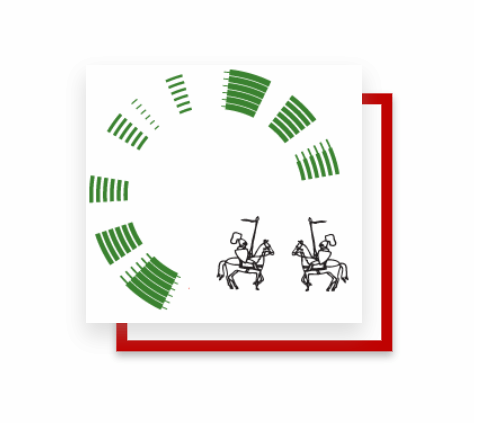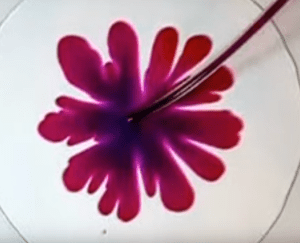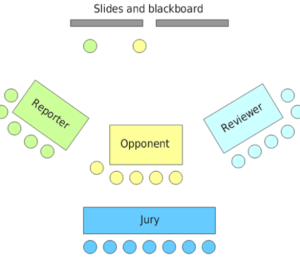INTERNATIONAL YOUNG PHYSICSICS’ TOURNAMENT
The International Young Physicists’ Tournament, IYPT, is one of the World’s foremost and most influential annual competitions in physics. The IYPT is a week-long event in which over 200 pre-university students participate after almost a year of preparation. This ‘World Cup’ is preceded by a variety of national competitions and preparatory conferences, in which thousands of people worldwide are involved at various stages. The IYPT is centered around 17 research problems, and calls for team work and discussion-based ‘Physics Fights’ in which the performances of the teams are judged by experts and educators from all over the world. During each round of the competition, the teams switch roles and take to the floor as Reporters, Opponents and Reviewers, in a similar way to a real-life scientific discourse.


THE TASK
Each year a set of problems is carefully selected by the IOC for the participants to solve. The problems touch on various areas in physics and often do not have a known solution. It is participant’s job to tackle them and come up with their proposal.In recent years participants were asked to investigate why chocolate in store is hard and breaks evenly, but once melted and solidified it is soft and less tasty. Young scientists had to investigate what are the conditions for a walking person to spill a coffee and how to prevent it. Or they were asked how Vikings could navigate using light polarization of the sky or why cell phones do not respond once put in a metal box. Problems being accessible to students around the world pose serious research questions often requiring expert background reading and advanced mathematical models.
PHYSIC FIGHTS
Tournament competition is based around Physics Fights. In each round teams are assigned one of the roles: Reporter, Opponent, or Reviewer. First opponent challenges the team of reporter to one of the 17 problems. Reporter can accept or reject the challenge, however he can only reject tree times without losing points. The team’s solution to an accepted challenge is reported in a form of 12-minute presentation. Opponent can ask questions, present his critical opinion about the solution and discuss with the reporter issues that require clarification. Lastly reviewer summarizes the performance of competing teams. Everything is closely watched by jury that grades teams in scale of 1 to 10. After the round, teams switch roles.

Course of the tournament
Flowing section is a description provided by iypt.org
The IYPT is a team-oriented competition. That means that in contrast to a lot of other competitions students do not compete alone and on their own but as a team. The participating teams have almost a year to prepare so-called “Reports” on 17 tasks, called “problems”. During the tournament teams present their reports and discuss and defend their solution against an opposing team. Presentation and discussion are then graded by a jury consisting of national and international experts. The whole competition is executed in English, since the IYPT is an international competition.
The precise course of the tournament might look a bit complicated at first glimpse. The following step-by-step introduction is intended to help you understanding the structure of the IYPT.
The Preparation
One of the most important aspects, if not the most important aspect of the tournament is the preparation phase. The problems of the IYPT are not tasks which can be solved within a short time with known methods, like in an exam. They are deliberately formulated in a more open way. They can be viewed from different angles and there are many ways to handle them. The task of the participants (together with their teamleader) during the preparation phase is to get as much knowledge about the problems as possible. There are no restrictions on how to do so. This kind of problems is intended to put the students in the same situation as a regular researcher is in. The solution to the problems and even the way how to get the solution is completely unknown.
The problems for the IYPT are published nearly a year before the tournament. That gives all participants enough time to do experiments, research literature and the internet, maybe talk to some experts, etc. Teamwork and organising ability certainly play an important role.
The preparation aims at two main goals: On the one hand it is important to gather as much background knowledge on the problems as possible. That is necessary to confidently defend a solution in a discussion against an opposing team or to try to find weaknesses in the presentation of another team. The other main goal is to prepare a well-structured Report of all the knowledge acquired.
The Tournament
The tournament itself consists of several rounds which are called “Physics Fights. The first five rounds are called the “Selective Fights”. They can be compared to the group phase of soccer competitions. All teams participate in five Selective Fights. The three teams with the highest total sum of points after the Selective Fights reach the Final Fight, which eventually determines the winning team.
The Selective Fights
At the beginning of the tournament the teams draw lots to form groups of three teams each. If the total number of teams is not divisible by three then one or two groups with four teams are formed.
Each of these groups then executes the first Selective Fight (in parallel). After that the teams change groups according to a scheme determined by the drawing of lots. This is necessary because otherwise there would be always the same teams competing in the same group. This procedure is repeated until all Selective Fights have been held.
The Structure of a Fight
A Fight. This is due to the fact that during one Stage each team has a specific role to play. These roles are exchanged after each Stages each team has played each role exactly once.
The roles are:
Reporter
Opponent
Reviewer
only in groups with four teams: Observer
The specific meaning of these roles will be explained together with the course of a Stage.
The Course of a Stage
A so-called “Fight, comparable e.g. to one single run of a skiing race. A Fight it is custom to have 5-15 minutes break, depending on how much time is available.
At the beginning of a Stage teams und jurors are introduced and the chairman of the jury reads out which team will play which role in this Stage.
After this informal part the actual Stage begins. Its course is precisely regulated by the tournament regulations. Each of the phases which will be described here has a maximum duration. These maximum duration may not be exceeded. Usually there is a special monitor available which displays a graphical representation of how much time is left in the current phase.
The explanations given in the next few paragraphs shall only illustrate the structure and course of the events in a Stage. For a more detailed overview of the Stage regulations please confer the official tournament regulations .
After the mentioned introduction, the Opponent-Team must challenge the Reporter-Team for one of the 17 tasks. Reporter-Team can accept or reject the challenge. If a team rejects a challenge too often during the whole tournament this team will lose some points.
If a problem has been selected the Reporter-Team has five minutes for preparation which are usually used to prepare notes, have a final look on the presentation or sometimes to prepare a live experiment for demonstration.
After the preparation time the Reporter has a maximum of twelve minutes to present the Report. There are no formal requirements in which way exactly this has to be done.
After the presentation of the Report the Opponent also gets a few minutes preparation time before taking the stage to present an estimation on the presentation done by the Reporter, stressing its pros and cons.
This speech by the Reporter tries to defend the solution and the Opponent tries to criticise it.
Afterwards the third team, the Reviewer-Team can ask questions to both other teams and then (after a short preparation) present an overview of the performance of the Opponent.
In the end the Reporter may present some final concluding remarks.
And finally the jurors may ask some short questions to all three teams. After that the perfomances of the teams in the current Stage.
Observer-Team does not take part actively in the course of the Observer role is to allow groups of four teams to be executed, if the total number of teams is not divisible by three.
After a short break another Stage with the same structure but exchanged roles of Teams begins. The teams exchange their roles until each team has been the Reporter exactly once.
There are some additional details worth mentioning:
All communication between the teams and the jury is done in English.
The team members may not communicate with outsiders (e.g. the teamleader) in the course of a Fight.
Apart from that all kinds of aids (literature, laptops, dictionaries, notes,…) are allowed.
Only one team member is active as Stage. That means that in general only this person represents the team during the Stage and talks for the team. Other team members are only allowed to make brief remarks or to assist with the presentation technically.
During one Fight no team member may be the active representative of the team more than twice. In other words: It is forbidden that the same person acts as Reporter, Opponent, and Reviewer in the same Fight.